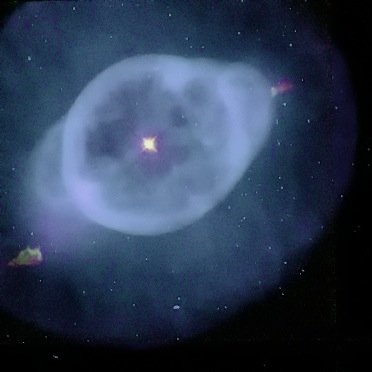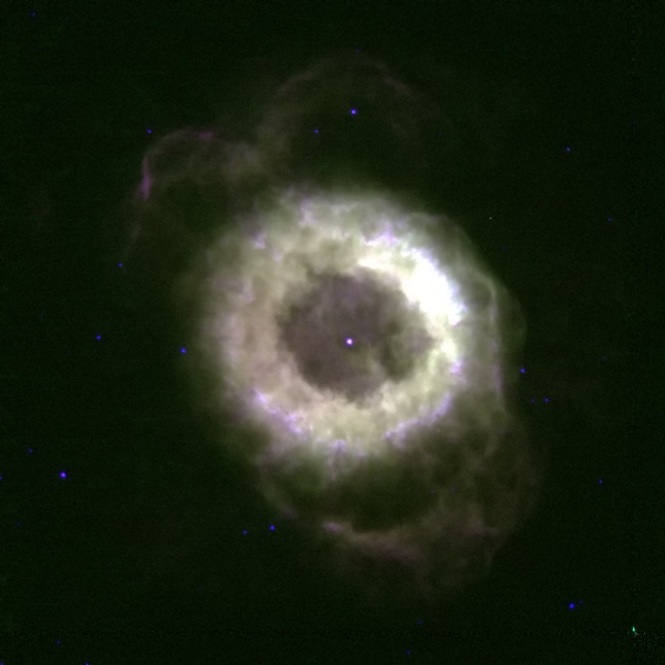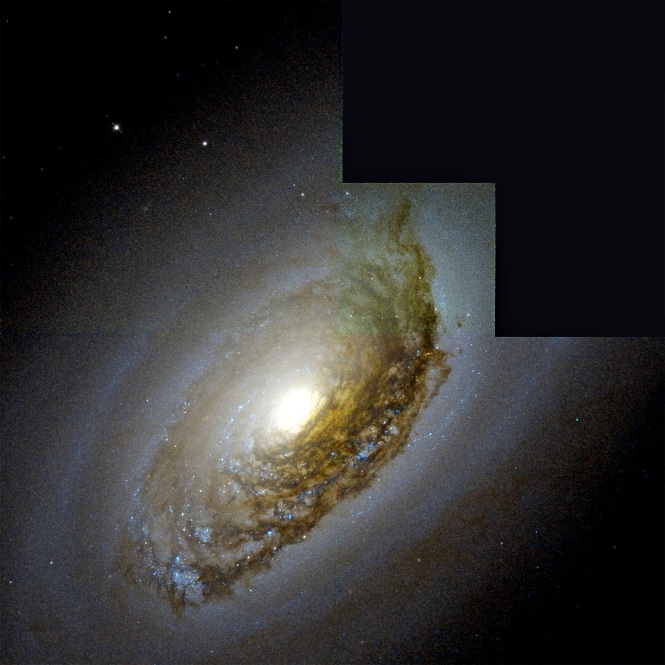I enjoy creating color images from three grayscale images. The post linked here will explain how to create color astronomical images. The colors assigned are not necessarily what the human eye would see, but are used to bring out details. Visit the gallery of previous Astro-Images. Unless otherwise noted, all images are made by me using three original grayscales from the Hubble Legacy Archive.
![]()
NGC 6514
It rises like a two-horned monster out of the dark clouds below. Instead, it is a lobe of dust and gas illuminated and eroded by intensely powerful stars out of the field of view to the right. Part of the Trifid Nebula, discovered in 1764 by Charles Messier, this lobe is a star forming region. The ‘horns’ and ‘tadpole’ appearances are due to the presence of very dense clumps of dust and gas at the tips which are more slowly blown to the left by the strong stellar winds. The three-lobed Trifid is in Sagittarius. This Hubble image is only a small part of the entire nebula.
![]()
NGC 3242
The first of two ghosts, and another John Herschel discovery, the Ghost of Jupiter is found in the southern skies in the constellation Hydra. It appears about the same size as Jupiter to the eye. Two jets puncture the sphere of gases to the lower left and upper right. This nebula is another example of the death throes of a sun-like star.

NGC 6369
The second ghost was discovered in the constellation Ophiuchus by William Herschel in the late 1700s. William, his sister Caroline, and his son John, all made many discoveries in the night sky. This planetary nebula is also called the Little Ghost and is featured in APoD. The round shape of glowing gas resembles a planet in a telescopic view.
NGC 4826
Found in the constellation Coma Berenices in 1779, this galaxy appears to have a black eye. A large amount of dust effectively obscures the light from behind. New stars are forming in the dense dust clouds. Careful analysis of the light indicates there are actually two galaxies superimposed upon each other and rotating in opposite directions. The counter-rotation is likely the result of a collision long ago. A wider view is available in this APoD post.




Great photos, Jim.
An element of astrophysics that has always interested me is how such a complex and diverse universe evolved from a near-perfect Big Bang, as measured from the uniformity of the cosmic microwave background radiation. To me, that is evidence of non-uniformity in the unknown source of the Big Bang. Uniformity should produce uniformity, so the Cause, whatever its source, must have had structure! Star science merging with philosophy. What a marvelous time we are living in!
You bring up some points that I am certain other great minds have pondered. It is an evolving understanding we have. The gravity wave results of LIGO and the coming James Webb telescope will help shape thoughts on that. Stay tuned.
Thanks for your visit and comments. It is a marvelous time indeed.
I’ve run into “trifid” in two other places recently: in descriptions of coots’ feet, and in reference to a kind of table leg. One thing is certain — I prefer your Trifid Nebula to the evil plants in “Day of the Triffids.” I’d forgotten that film. Now, I think I’ll try to forget it again.
I don’t think I ever saw that movie. I may not ever want to see it either. It sounds too scary.
“…officer must find a way to conquer tall, aggressive plants which are feeding on people and animals”
Fantastic photos – space is endlessly amazing!
I agree it is amazing. Thank you.
Incredible images Jim! There are so many interesting colours in the night sky in the direction of Sagittarius. I bet you are looking forward to the launch of the James Webb Space Telescope and the eventual images it will beam back. Take care Bob.
Great colors Jim!
Thank you. Remember, they are artificial. Not what the eye would necessarily perceive.
It is very interesting to know how to create color astronomical images. Thank you for your article. bilere